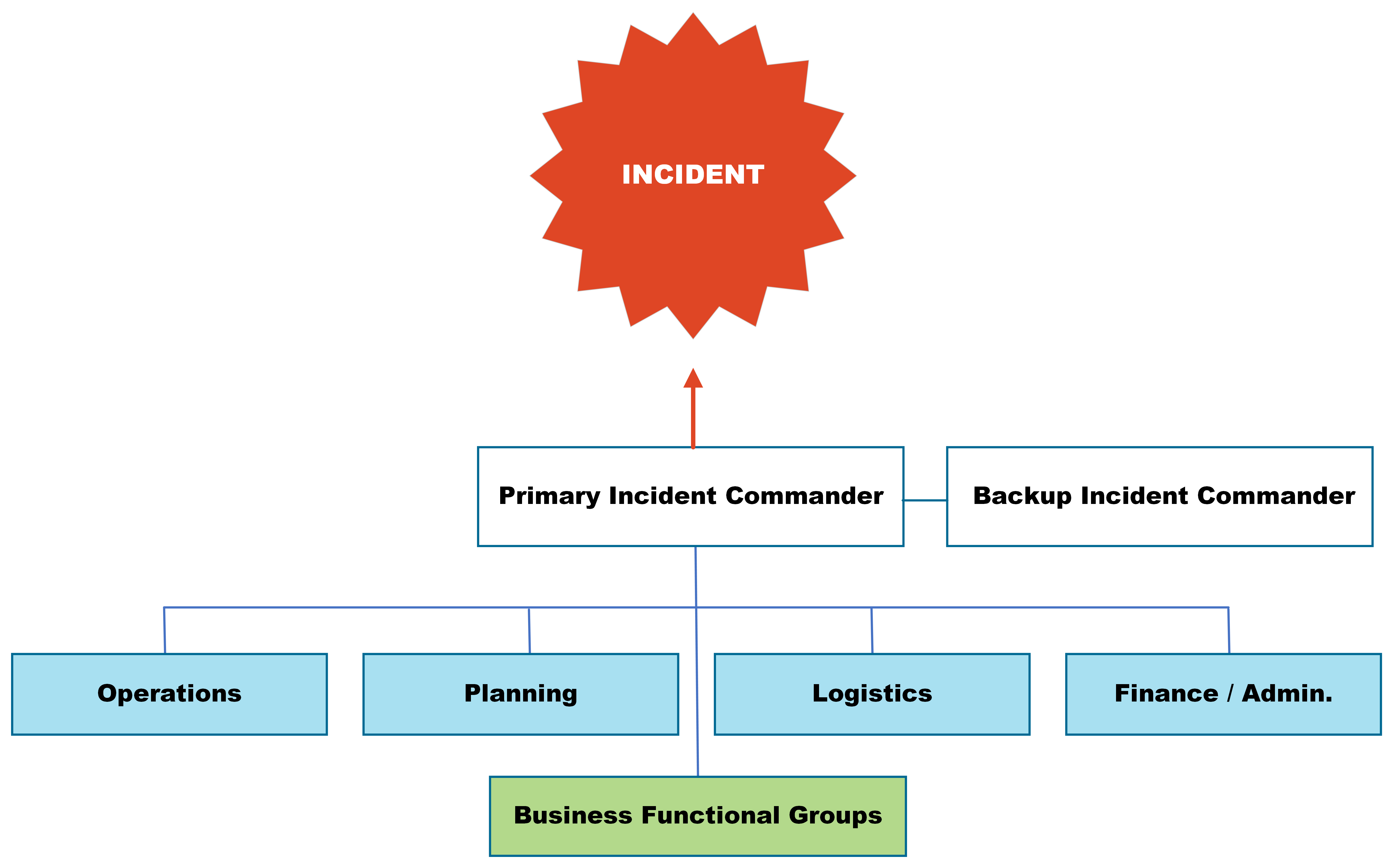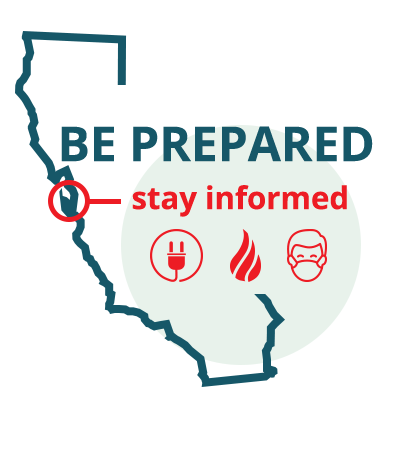Incident Command System (ICS) Companion Guide
The function of ICS includes assigning one central coordinator, the Incident Commander, to manage response activities by assigning personnel, deploying equipment, obtaining additional resources and coordinating with participating partners as needed. The Incident Commander delegates emergency management responsibilities as needed, and thereby maintains necessary focus on the overall picture of the disaster situation, as illustrated by this org chart:

Incident Command functional areas:
- Command – Develops incident objectives and approves resource orders
- Operations – Identifies, assigns and supervises the resources needed to accomplish the incident objectives
- Planning – Tracks resources
- Logistics – Orders resources
- Finance/Administration – Procures and pays for resources
The Incident Commander is the person responsible for all aspects of an emergency response, including quickly developing incident objectives, managing all incident operations, application of resources as well as responsibility for all persons involved.
The Incident Commander sets priorities and defines the organization of the incident response teams and the overall incident action plan. The role of Incident Commander may be assumed by senior or higher qualified officers upon their arrival or as the situation dictates. Even if subordinate positions are not assigned, the Incident Commander position will always be designated or assumed.
Incident Commander roles and responsibilities
Building and evacuation
Note that there could be building-only (facilities-only) incidents or major emergencies.
Incident Commanders
Primary: Oz Bubakar
Backup: Sheila Galliani / Pat Curran
Responsibilities
- Establishes objectives, priorities and strategic guidance
- Communicates with first responders
- Communicates with other Incident Commanders
- Ensures the safety of all people in building
- Oversees building evacuation and ERT team
- Establishes procedures for joint decision making and documentation
- Captures lessons learned and best practices
IT Systems
Incident Commanders
Primary: Glenn Smith
Backup: Kris Neri
Responsibilities
- Establishes objectives, priorities and strategic guidance
- Communicates with other Incident Commanders
- Ensures recovery of IT systems
- Activation of colocation and remote access
- Shutdown of systems
- Establishes procedures for joint decision making and documentation
- Captures lessons learned and best practices
Area-wide incidents
Major earthquake, destruction of roads/bridges, etc.
Incident Commanders
Primary: Sheila Galliani
Backup: Pat Curran
Responsibilities
- Establishes objectives, priorities and strategic guidance
- Communicates with other Incident Commanders
- Establishes procedures for joint decision making and documentation
- Captures lessons learned and best practices
Employees and Contractors
Incident Commanders
Primary: Colleen Murphey
Backup: Sheila Galliani
Responsibilities
- Establishes objectives, priorities, and strategic guidance
- Communicates with other Incident Commanders
- Ensures communication with all employees and contractors regarding incident or emergency
- Ensures employee contact data is up to date
- Establishes procedures for joint decision making and documentation
- Captures lessons learned and best practices
Community Response
Incident Commander
Amy Scribner
Responsibilities
- Participate in community information calls
- Gather necessary information to identify members impacted
Building-only (Facilities-only) incidents
Includes incidents such as sewage spills, broken water mains or roof leaks.
- Do not necessarily pose an immediate danger to life or health
- Do not necessarily involve emergency/police/paramedic services
- Are typically addressed or resolved by facility organizations
Major emergencies:
- Pose an immediate danger to life or health or
- Impact the building as a whole or
- Require the evacuation of entire building or
- Require assistance from the Department of Public Safety and/or city/county emergency services
